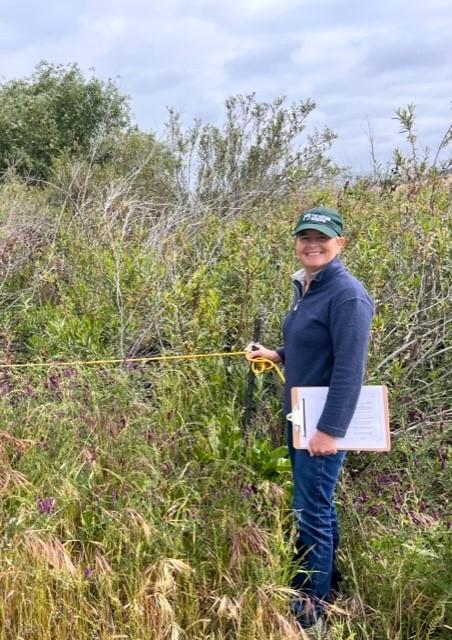
Laura’s Line Spring 2023
Hello everyone, don’t you love the title of this column? Laura’s Line is a way for me to convey written information about the Nature Reserve at Rancho Mission Viejo, its wildlife, and plants; and the management and monitoring that we do on the Reserve.
Laura’s Line also represents an important physical reality – the demarcation between what is Reserve and what is development. Officially the line between Reserve and development is called the “Impact Boundary” and is denoted in the field by a yellow rope-line. You might have even seen these yourself around the community. Inside the yellow rope is development or sometimes infrastructure, outside the yellow rope is Reserve. Because part of my job is to make sure that the impact boundary is respected by all construction activities, contractors call it Laura’s Line.
Outside Laura’s Line is the Nature Reserve at Rancho Mission Viejo. Many of you know that as RMV develops, more open space is enrolled into the Reserve. Once enrolled, the open space is officially considered part of the Reserve and subject to management and monitoring. The purpose of the Reserve is to protect forever the habitats that are occupied by seven federally threatened and endangered species, in addition to many other sensitive and rare species. By protecting the habitats that these species live in, we can help ensure that all these species persist over time.
Each of these habitats that we monitor and manage has a set of biological goals and objectives, as do many of the species that we monitor. Think of these as a report card. Our management actions are designed to promote habitat health, for example we remove non-native invasive species. Think of a management action as “homework”. The “test” to see if we get a passing grade is our monitoring. Our monitoring protocols generally involve determining whether any given area is occupied or not by any given species, whether the area occupied by any given species is the same, bigger or smaller than historic records and/or whether the number of any given species is same, bigger or smaller than historic records.
Management and monitoring of the Reserve is coordinated with multiple federal and State agencies, and we regularly consult with a panel of expert scientists to make sure that our management actions and monitoring protocols are appropriate for the species or habitat. What we learn from our agency partners, the Science Panel and our management/monitoring results is factored into the next years action plan.
